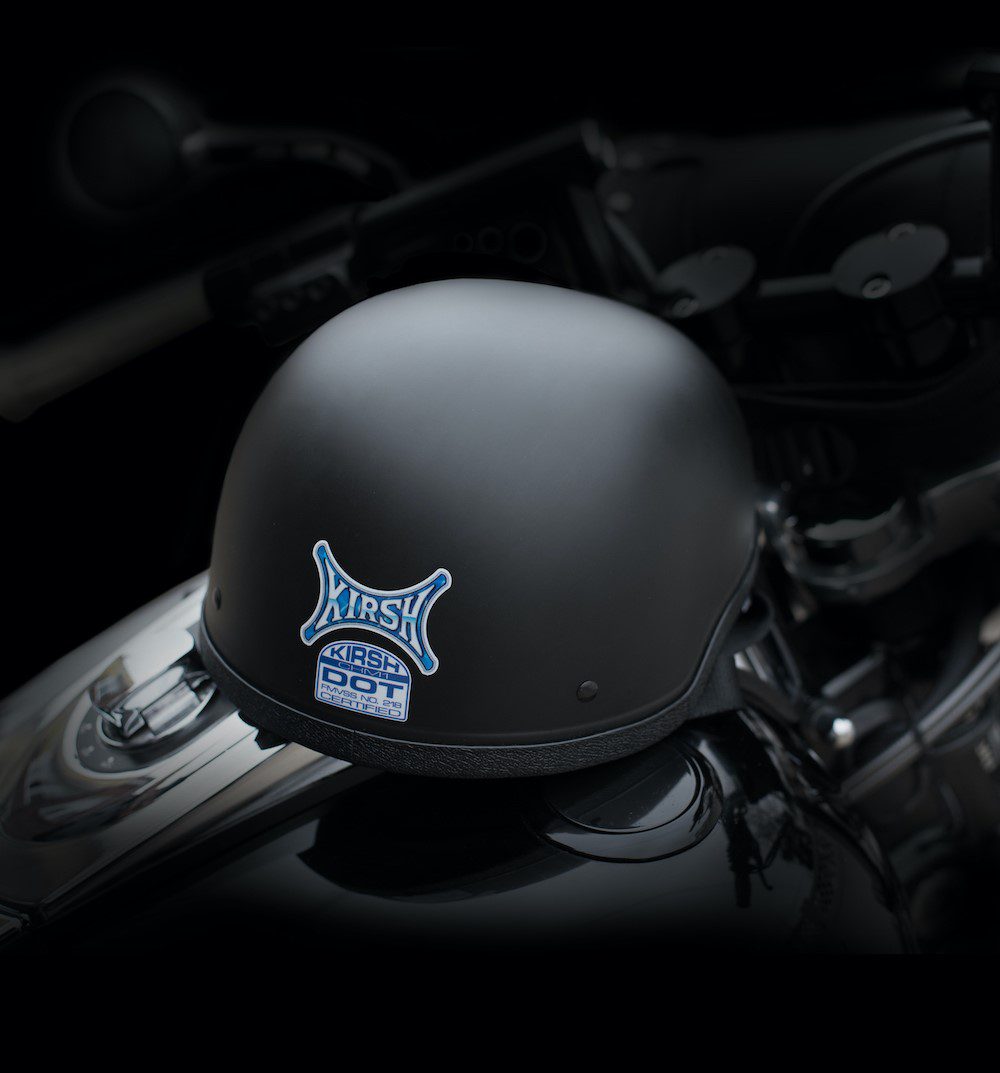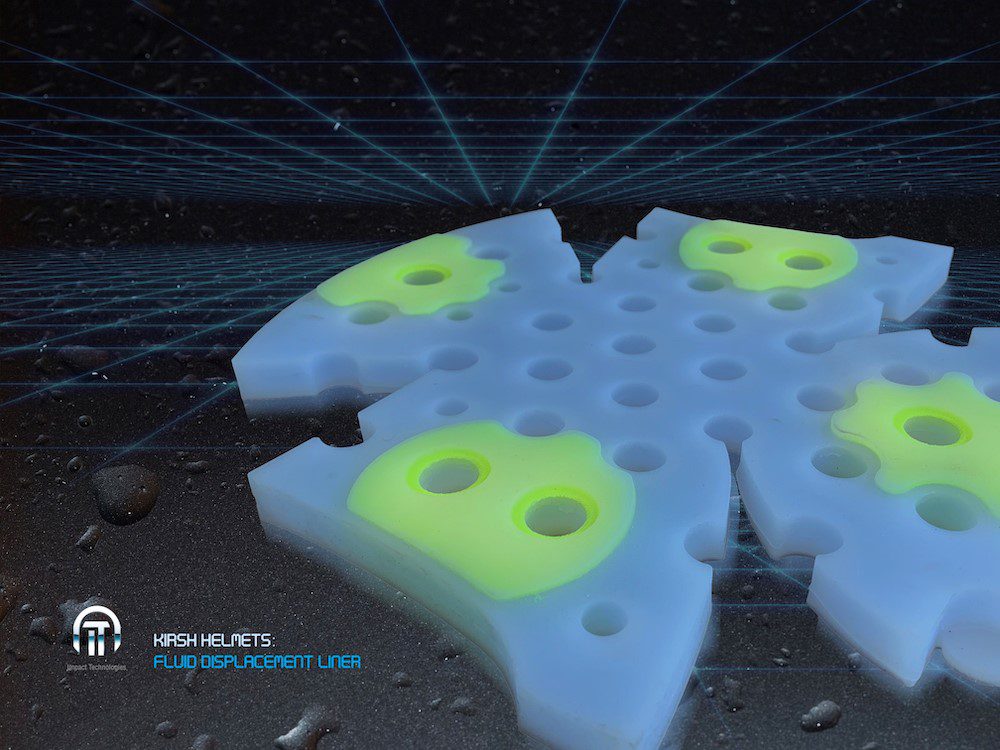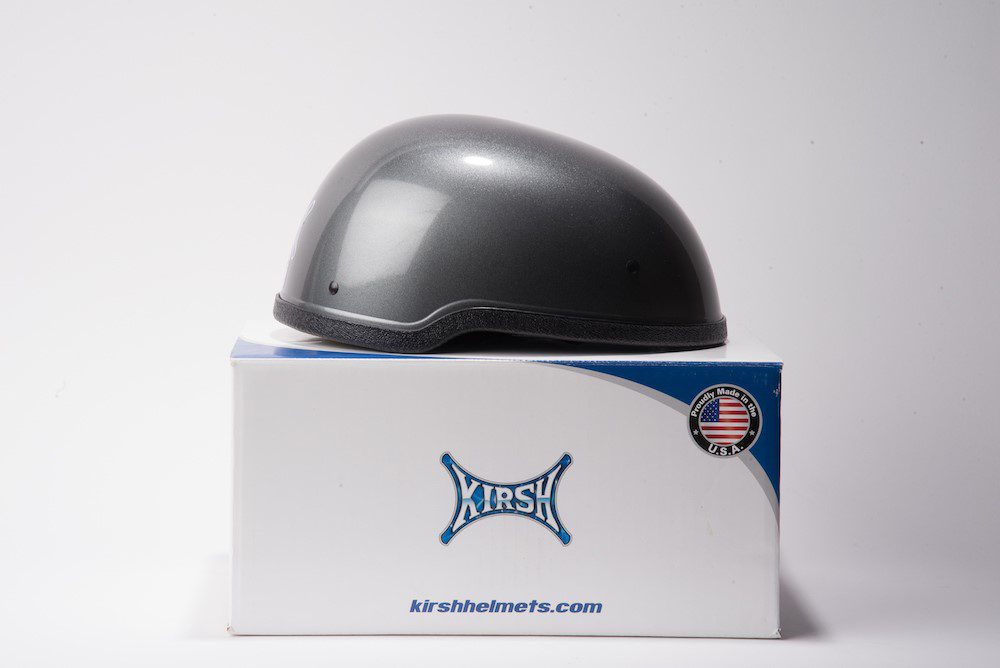American start-up KIRSH Helmets has started producing helmets that have a slimmer shell without compromising safety.
Instead of thick EPS foam, inventor Jason Kirshon uses a thinner layer of silicone and silicone fluid.
He says the fluid displacement liner is designed to move impact energy from all directions and will be the safest in the world.
The advantage of their technology is that the helmets are slimmer, which means less aerodynamic drag for reduced wind noise, “helmet lift” and neck ache, as well as a more fashionable look.
They also claim the smaller profile will reduce the helmet radius which should be critical in reducing rotational torque in a crash and reduce the likelihood of neck injuries.
Harley rider Jason announced his invention in 2017 and they are now in production in the USA and taking advanced orders for their half helmet, a style which constitutes about 40% of the American market.
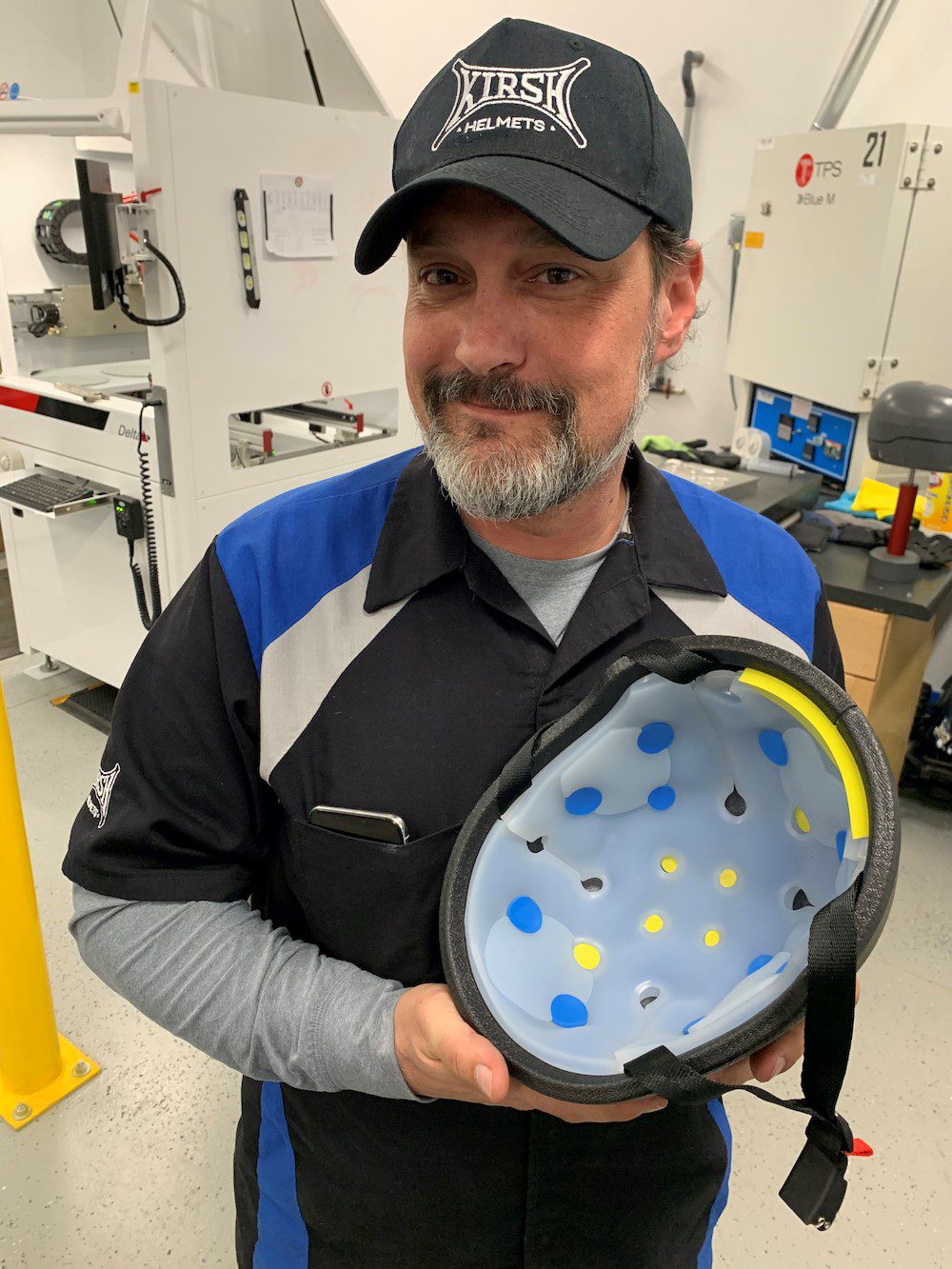
First deliveries to customers are expected later this year.
While the company has only produced a half helmet with American DOT certification, they plan to also produce open-face, full-face and modular helmets.
Co-founder of the New York company, Donald Devito, says they have seven patents pending and are seeking European patents so they can develop the other helmet styles as half helmets are not permitted under European rules.
“We’ve received a lot of interest in the USA and from all over the globe and have been the official helmet of the Sturgis Motorcycle Rally for the last three years,” he says.
“We’re doing a pretty good job for a young company.”
KIRSH Helmets has also employed 35-year Harley-Davidson Motor Company veteran Steve Piehl to consult on the motorcycle industry.
“I have ridden all over the world and have worn every type of helmet,” Steve says.
“When I put on a KIRSH half helmet, it fits tighter and doesn’t lift on the highway. When you turn your head you also don’t get that pull.
“And because it’s a smaller-size helmet, it doesn’t give you that mushroom look.
“This is as close to a no-helmet experience as you can get and still have that protection.”
He says they use smaller shell sizes in all helmets because they don’t need up to 2cm of EPS foam lining to protect your head.
“Our data says we are doing really well in head protection,” he says.
“I feel more comfortable in a KIRSH than any other helmet.”
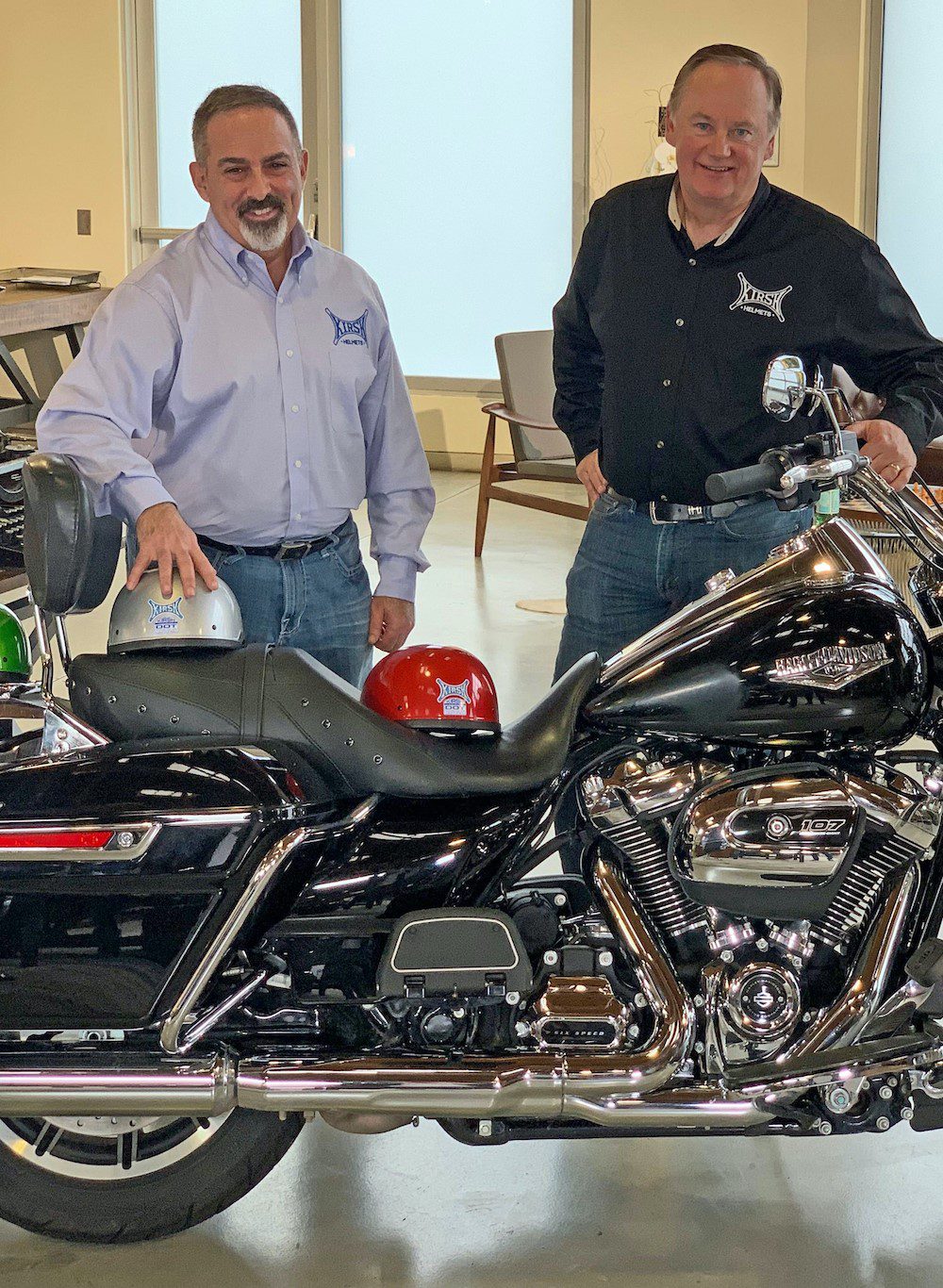


Steve says pricing will be comparable to other helmets in the mid-to-high end.
They are also looking at eventually adding smart helmet technology such as head-up display, cameras, intercom and more.
The helmet technology will also be used for other sporting helmets such as cycling and football.


